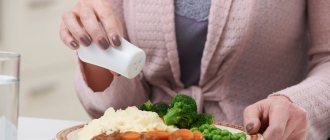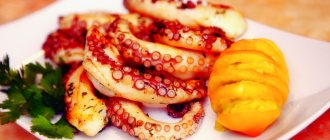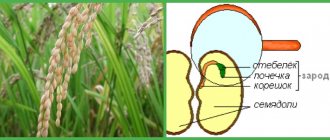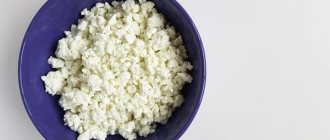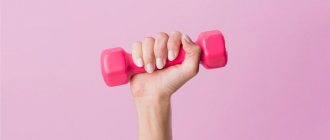Once you have decided how many calories you need per day and what your BJU norm is, you need to distribute the resulting amount of nutrients among meals during the day.
Correct distribution is no less important than the final amount, because only in this case you fully meet the body’s needs throughout the day. In this article we will talk about what your main and additional meals should consist of.
The existence of an anabolic window is not supported by research
The analysis by Schonefeld, Aragon, and Krieger highlighted how important the timing of protein intake is for optimal adaptation to training. The researchers included 20 studies on the effects on strength performance and 23 studies on the effects on hypertrophy.
Result: The data do not support the claim that protein consumption less than 1 hour before and after exercise significantly influences adaptation to resistance training.
Simply put, research does not support the existence of an “anabolic window” (the period when protein intake has the greatest impact on subsequent gains in muscle strength and mass).
According to the authors, if a window exists, it covers a longer period, and long-term adaptation depends on the amount of total protein intake. To achieve maximum gains in strength and muscle mass, the authors recommend consuming at least 1.6 grams of protein per kg of body weight (average intake: 1.81 – 1.91 g/kg body weight per day).
Another review by Aragon and Schonefeld looks at the effects of post-exercise carbohydrate and protein intake, the so-called “anabolic window.” The researchers set out to look at the impact of the timing of protein and carbohydrate intake after exercise on muscle adaptation, and to provide evidence-based recommendations for maximizing the effect on muscle growth.
The review consists of sections devoted to the influence and importance of carbohydrates and proteins for recovery.
Restoration of glycogen reserves. Although there are studies showing the benefits of combining protein with carbohydrates, it appears that protein consumption can speed up resynthesis only if insufficient carbohydrates are consumed. For example, adding 0.4 g protein per kg muscle mass did not increase glycogen resynthesis when carbohydrate intake was 1.2 g/kg body weight per hour. Regarding carbohydrate consumption, the question remains of the significance of glycogen resynthesis measures when resting between exercises for less than 8 hours. At the same time, the importance of “loading” carbohydrates in the first two hours after the end of exercise is not disputed if it is necessary to restore glycogen stores as quickly as possible.
Breakdown of muscle proteins. It is known that the breakdown of muscle proteins immediately after exercise is relatively low, increases by 50% by the third hour after the end of exercise and leads to a negative protein balance, after which increased proteolysis (the process of protein decomposition) is observed until 24 hours after exercise. Contrary to popular belief, small amounts of food are needed to prevent this phenomenon, and it does not really matter whether the intake is protein or carbohydrate.
Synthesis of muscle proteins. The authors of the review believe that the intake of proteins and protein-carbohydrate mixtures has the greatest impact on the synthesis of muscle proteins after training. In this regard, the need for carbohydrates for maximum stimulation is not entirely clear. There is probably a so-called “anabolic window”, but it is much longer in duration than the first hour after exercise.
Muscle hypertrophy. Drawing firm conclusions about the need to consume protein (or protein in combination with carbohydrates) is extremely problematic, since most studies use a pre- and post-exercise regimen.
The need for protein intake immediately after exercise for muscle hypertrophy has not been confirmed to date.
Fast carbohydrates - a list of foods for weight loss and weight gain
Why are slow carbohydrates preferable to fast ones for weight loss? It's simple - fast ones instantly give you a feeling of fullness, cause a sharp jump in sugar, while the body spends a minimum of energy on their processing. The excess “falls asleep” on us in the form of fat and the famous “orange peels”, all due to the same increased glycemic index - the speed at which food becomes energy. Slow carbohydrates take longer to process, so we don’t feel hungry longer.
At first glance, it seems that nutritionists are right - you should completely abandon fresh white bread and chocolate candies in favor of durum wheat pasta and cranberry juice, but it is short carbohydrates that charge you with energy, good health, and mood. They contain fructose, glucose, maltose and a number of other elements, without which those losing weight will sigh sadly and hang exhausted on the crossbar.
You can't give up carbohydrates while dieting
Advice: excluding short carbohydrates completely when losing weight is wrong, limiting your consumption as much as possible and choosing the safest ones is correct.
We have described in detail which foods have an acceptable GI and which have an prohibitive GI for a dieter. Now let’s take a closer look at compiling a table of foods containing fast carbohydrates that are acceptable on the weight loss menu. For convenience, the list can be downloaded for free online, printed and hung on the refrigerator - this way you will clearly see what is allowed and what is temporarily not allowed.
Honey is also a fast carbohydrate
Higher doses of BU contain:
- Sweets - sugar, jams, sweets, syrups, condensed milk, honey, etc.
- Dried fruits - fruits that have undergone dehydration decrease in volume, but the amount of sugar in them increases proportionally
- Sweetened carbonated drinks and store-bought fruit and vegetable juices
- All baked goods - pies, cakes, pastries, pies, cookies, white bread
- Sweet berries and fruits - pineapples, watermelons, bananas, melons, cherries, grapes, mangoes
- Vegetables - potatoes, pumpkin, parsnips, boiled carrots and beets
- Cereals - white/brown rice and rice flour, millet, muesli
- Mayonnaise and other sauces
It is clear that saying a categorical “no” to all this, given, for example, the health benefits of honey or pumpkin, will not be the smartest decision. It is important to introduce BU into the menu rationally and give preference to food with a glycemic index of up to 55.
The daily intake of carbohydrates of all types is 2 grams per kilogram of body weight. Fast ones should make up the third part. Of course, excessive consumption of fried potatoes or white bread will negate all your athletic achievements, but a muesli bar or banana after an active workout will be the right choice.
Rice and rice flour are fast carbohydrates
Tip: any alcohol is considered a fast saccharide. This means that you should avoid strong drinks while on a diet.
An important question: how to understand the list of foods containing fast carbohydrates for those who need them to gain weight? To do this, experts in the field of sports nutrition recommend increasing their amount in the diet to 3-4 grams.
It's best to eat a muesli bar after a workout.
Nutritionists have endless debates about whether eating carbohydrates as the last meal is acceptable. The answer is simple: a portion of BU is absorbed in about an hour, after which the body begins to demand a continuation of the banquet. That is, if you eat something from the black list in the evening, without expecting increased physical activity, it is immediately postponed for the future. It’s better to leave the BU for the first half of the next day.
At the same time, do not forget: when you are not in the active phase of cutting or losing excess weight, but are simply maintaining shape, you can consume all foods in moderation, since only unspent foods are transformed into fat.
Bananas should be eaten in moderation
Morning with protein
Summarizing the information from the sections, the authors note that even small amounts of protein can have a positive effect on both immediate and long-term adaptation.
essential . If the exercise is carried out in the morning, then taking even a small amount of protein and/or carbohydrates will have a positive effect on the results of the exercises performed.
Young people need 20 grams of complete protein for maximum benefit, while older people may need more. In general, 20–40 grams of protein per meal is needed for maximum anabolic effects.
Looking at pre- and post-workout meals, a person with a lean body mass of 70 kg needs 28-35 grams (0.4 - 0.5 g/kg body weight) of high-quality protein at each meal. There should be 3 to 6 hours between these meals, depending on the rate of absorption (type and consistency of nutrients consumed). Carbohydrate intake before, during and after exercise is associated more with endurance exercise.
How to properly consume carbohydrates? 5 simple rules
Complex carbohydrates should be about 40-50% of your diet
Why?
Carbohydrates are the same fuel for our body as coal is for a steam locomotive. If we regularly throw coal into the firebox, our locomotive moves confidently without slowing down. When the coal runs out, the locomotive slows down. If we throw a couple of buckets of coal into an extinguished firebox, the driver will need a lot of time and effort to fan the fire again and pick up speed.
The same thing happens with our body. As long as we regularly supply him with carbohydrates, he works without whims, and his metabolism occurs normally. As soon as we create a little stress for it by stopping consuming carbohydrates, the smart body will immediately begin to stock up “for future use,” increasing the volume of fat folds at the waist. At the same time, the metabolism slows down: you can’t rush, you need to save your energy! The instinct of self-preservation is inherent in us by nature from birth.
Limit the consumption of foods that contain a lot of starch
To maintain balance in the body, we only need one
a moderate portion
of pasta, rice
or
potatoes
, three to four slices of bread per day. If we had porridge for breakfast, then we eat soup or borscht and meat dishes for lunch. If we ate cottage cheese with fruit and a sandwich for breakfast, then we can eat pasta and vegetables for lunch.
Why is that?
It's all about the starch molecules. They are not digested in the body, but only swell, absorbing moisture and forming a kind of paste in the digestive tract. If you consume a lot of foods containing starch, the functioning of the entire digestive system is disrupted, the metabolism changes, the extra pounds begin to literally “stick”: the body does not work as it should.
What if I want porridge in the morning and potatoes and greens for lunch?
If you make it a rule to eat a portion of oatmeal every morning, then at lunchtime you can safely treat yourself to pasta or delicious mashed potatoes. Oatmeal is our lifesaver, which makes the body work like a clock.
3. No starch for dinner!
Starch is too heavy a food for an evening meal. And at night, our digestive tract should rest, like the rest of the body.
What do i do?
For dinner, dishes made from lean fish, lean meat and fiber-rich vegetables are suitable. Fiber, by the way:
Conducts a “spring cleaning” of our entire body. Dead cells, toxins and waste - fiber, like a janitor, “sweeps out” everything unnecessary;
Absorbs moisture very well and removes excess water - this is especially important for people suffering from edema;
Reduces calorie content of food. The absorption of carbohydrates slows down, and as a result, the absorption of sugar in the intestines slows down. The feeling of hunger does not occur for much longer;
Supports natural microflora in the intestines, which has a beneficial effect on the condition of hair and skin;
Lack of fiber in our diet can cause various diseases. Obesity, diabetes, cholelithiasis are just a few.
Starch does not combine well with other foods
What does starch go well with?
It is best with vegetable salads, raw vegetables, which have a lot of fiber.
A fresh cucumber salad would be an excellent addition to rice. Greens, fresh, stewed or grilled vegetables are perfect for dishes made from potatoes, cereals or pasta. starchy vegetables go well together
- these are pumpkin, beets, potatoes, carrots, celery root and parsley.
Products containing starch are digested faster and better in their raw form than those that have undergone heat treatment.
You can make delicious salads with the addition of herbs from fresh beets and carrots. Other starchy vegetables that we are not used to eating raw - for example, potatoes or pumpkin - need to be properly cooked: steamed or baked in the oven for a minimum amount of time. It is better not to boil the porridge, but try to make it more crumbly. Potato juice is very useful - it helps to cleanse and remove excess fluid from the body.
So how do you eat raw pumpkin?
Prepare a very simple and delicious salad! It's perfect for dinner or to satisfy your hunger in the afternoon.
PERFECT DIETARY SALAD
The perfect diet salad
Necessary:
100 g raw pumpkin 100 g raw carrots 100 g apple 30 g walnut kernels 1 tsp. white mustard seeds 1 tsp. olive oil 0.5 tsp. balsamic or apple cider vinegar
How to cook:
1. Peel and grate pumpkin and carrots. 2. Peel the apple and cut into strips or cubes. 3. Finely chop the walnut kernels with a knife. 4. Combine olive oil and vinegar. 5. Mix the main ingredients and season the salad with a mixture of vinegar and oil. 6. Place on a serving plate and sprinkle mustard seeds on top.
The salad must be seasoned with vegetable oil. Vitamin A, contained in carrots and pumpkin, is fat-soluble and is absorbed in our body only if there is fat in the dish. But salting this salad is not recommended. A mixture of vinegar and olive oil gives it a wonderful taste.
Take the best from nature, be beautiful and energetic!
Best regards, Natalie Lissi
While protein diets and carbohydrate-free nutrition systems are at the peak of fashion, we all forget one simple thing. The assertion that carbohydrates are bad crumbles to dust after just one argument: all vegetables and fruits, as well as any greens and dairy products, consist of them. Can the most natural and healthy plant foods be harmful? Hardly. So what's wrong with these weird carbohydrates?
The fact is that there is a huge difference between “good” and “bad” carbohydrate foods. “Good” will saturate you with vitamins and microelements, give you long-term satiety and a boost of energy for a long time. And the “bad” one, if consumed in moderation, will settle as extra pounds on the stomach and hips.
Are you already looking at the rosy bun thinking that it’s definitely good? Be patient for a few minutes. First, let's deal with those for whom carbohydrates can really ruin their health.
Protein + carbohydrates are more effective than just carbohydrates
A study from Stearns and colleagues looked at the effects of protein and carbohydrate intake on endurance and performance exercise. The positive effect of carbohydrate intake on performance during exercise lasting more than an hour is beyond doubt, but it is not clear whether protein supplementation can (or should) be added.
11 studies were included in the analysis. Three studies (whose protocol involved constant exercise over a period of time) found no benefit from protein consumption. The four protocols to exhaustion found a significant benefit from protein intake, but the caloric intake of the supplements was not similar. All protocols where the load was performed to the point of exhaustion showed an increase in performance in the group that consumed proteins.
Key Finding: Co-consuming protein and carbohydrate during exercise provided a 9% performance benefit compared to the carbohydrate-only group.
Statistically, the analysis revealed no significant effect of protein intake in time-limited exercise trials, whereas the increase was significant in exercise-to-exhaustion protocols.
Given the small number of studies, the practical use of carbohydrates in conjunction with proteins is acceptable and is not likely to have a negative impact on physical performance. In fact, protein intake may improve performance, but more research is needed to draw definitive conclusions. Athletes are strongly encouraged to consume protein immediately after exercise to reduce recovery time and increase performance in subsequent workouts.
For breakfast
When you eat carbohydrates for breakfast, you allow your body to process and absorb them throughout the day to convert them into energy. The best carbohydrates for breakfast are fiber and plant-based proteins such as oatmeal, fruit, almond butter and vegetables.
Whole wheat bread
Is there any harm
Proteins, fats and carbohydrates are the basis of nutrition. To maintain health, it is important to maintain balance. Many, in the struggle for their dream figure, try to consume more proteins, reducing fats and carbohydrates in the body to almost zero. This gives quick results for weight loss, but is extremely dangerous for health, especially for people with health problems.
Harm of excessive protein consumption:
- disruption of metabolic processes in the body;
- increased risk of developing cardiovascular diseases;
- constipation;
- changes in intestinal microflora and dysbacteriosis;
- reproductive dysfunction in women;
- dysfunction of the liver and kidneys, etc.
If you maintain a balance of nutrients, proteins do not harm the body, but rather should be an important part of the human diet.


